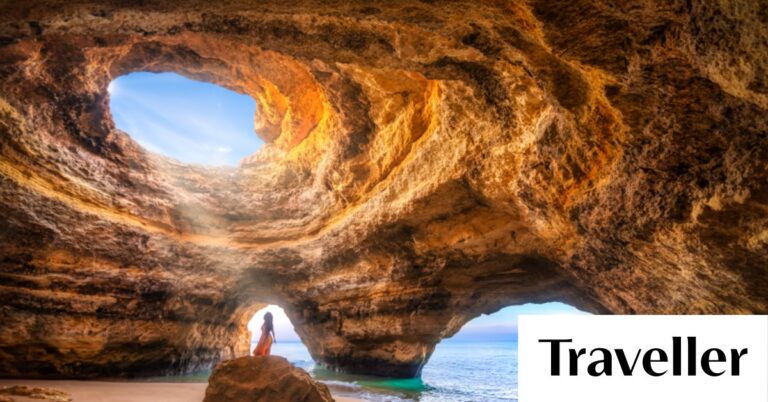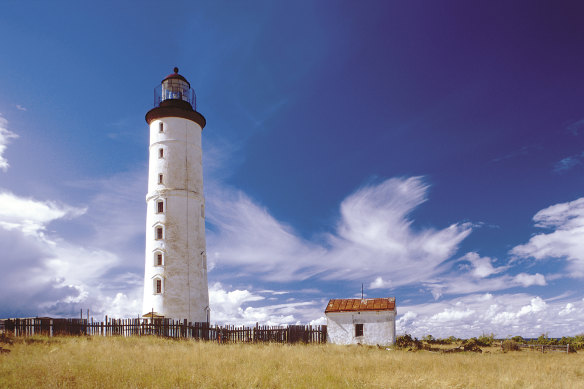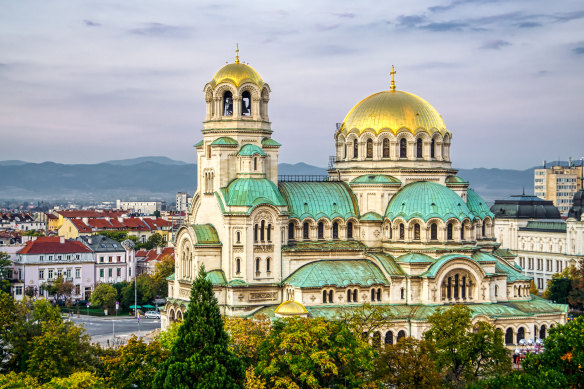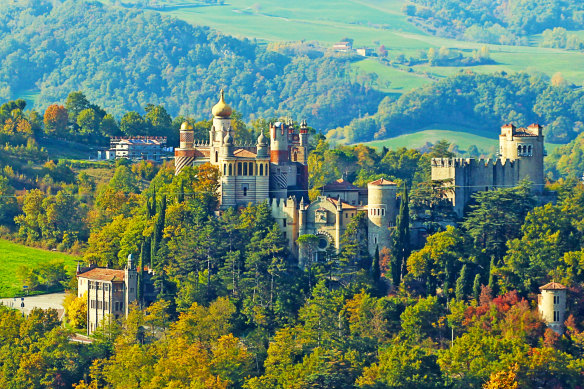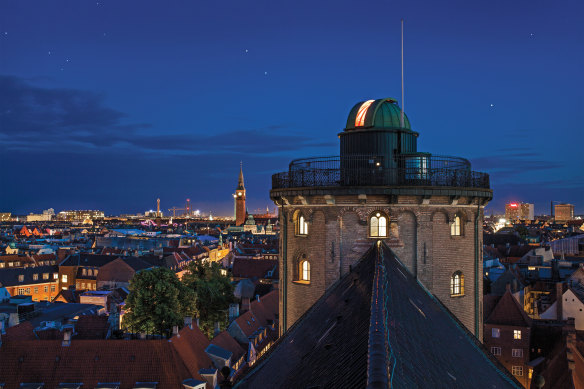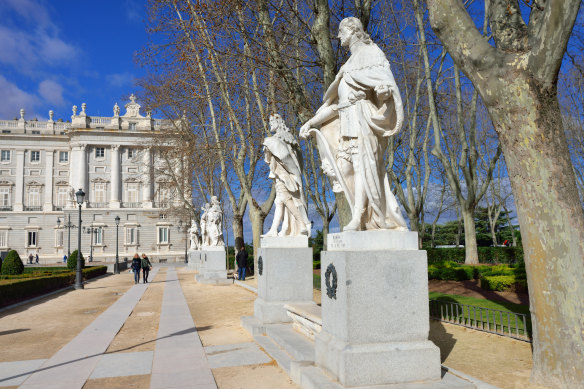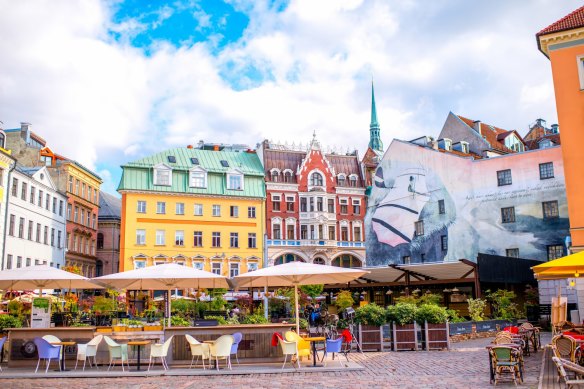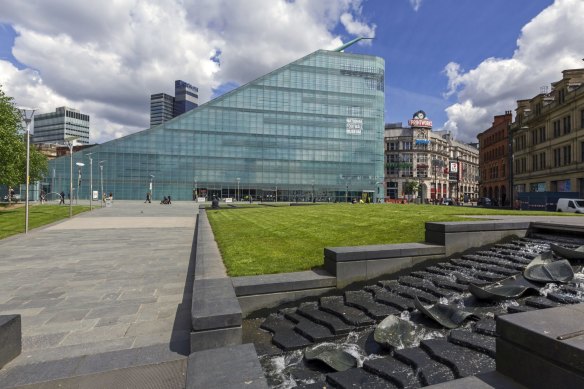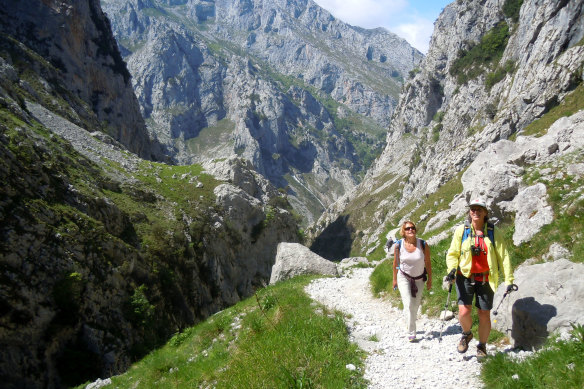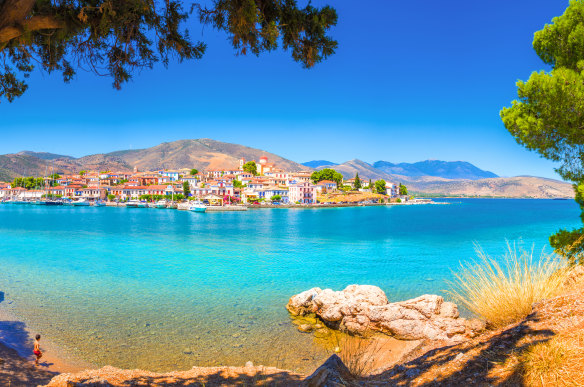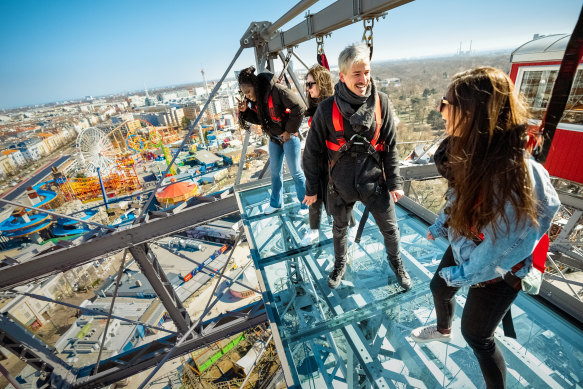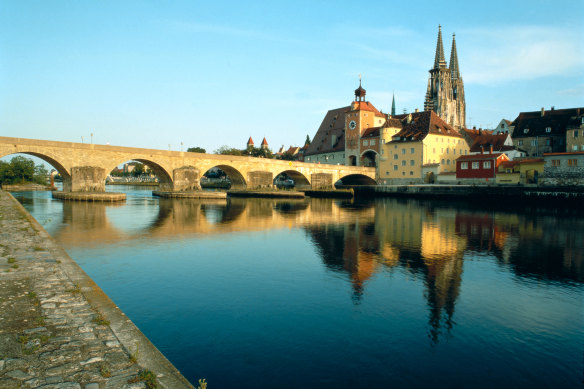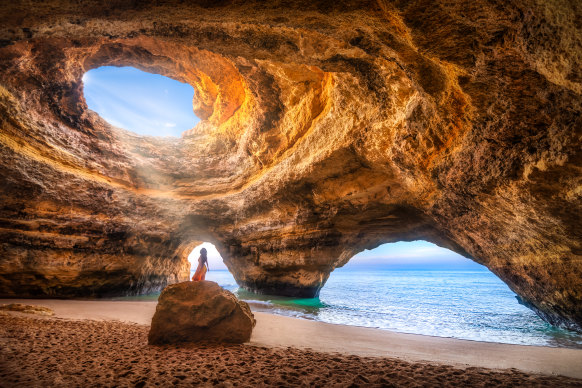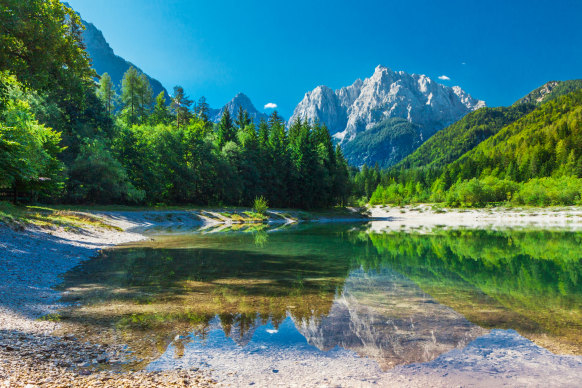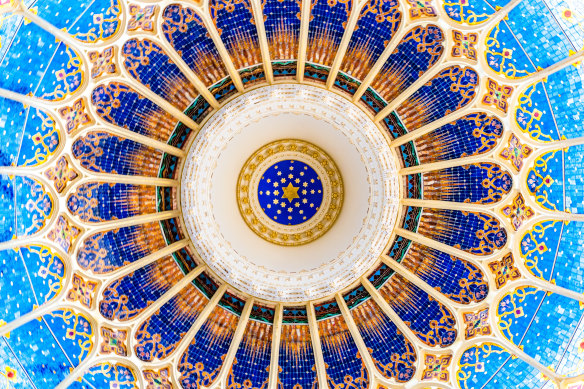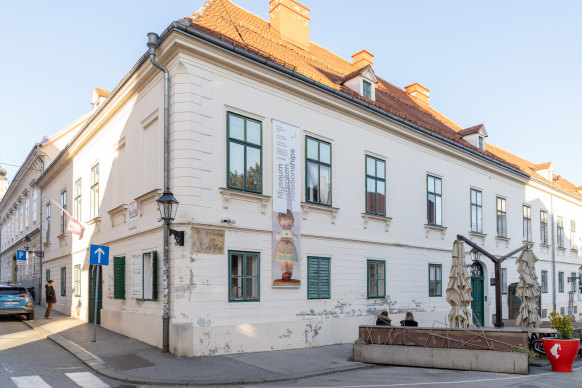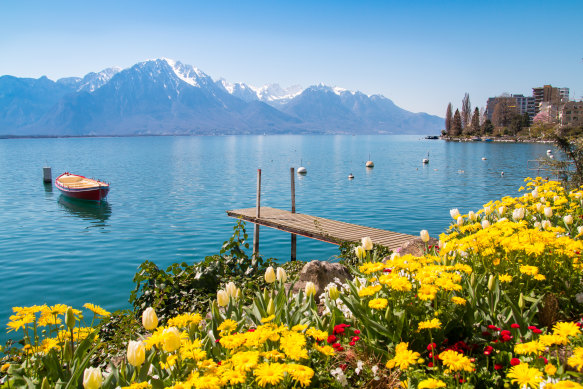Normal text sizeLarger text sizeVery large text size
Who needs to be told that the Eiffel Tower and Leaning Tower are must-sees of Europe? Nobody. Chances are you’ve already seen them and, if you haven’t, you’d better brace yourself to battle the tourist hordes.
While there’s nothing wrong with Europe’s big-name sights, the Continent has less obvious treasures and attractions that you should put on your travel list, which can prove just as satisfying as their cliched counterparts – and are often much more relaxing.
Copenhagen has a tower too, and it’s far more interesting than the Danish capital’s much-touted Little Mermaid.
Europe still has castles, cathedrals, islands and even mountain ranges that Australians are barely aware of, and which retain a local atmosphere.
Don’t be dispirited by news of Europe’s tourism pressures. The small continent still has plenty of elbow room and a host of quirky marvels that remain mostly undiscovered by the wider world.
The trick is to think beyond those regular horizons, and you’ll always discover something new. Here are some ideas to get you going.
The island
The obvious choice Almost any Mediterranean island, crammed with boozy, burnt-pink northern Europeans.
The less obvious choice Baltic islands avoid package holidaymakers and provide invigorating winds, time-warp villages and gnarly churches. Saaremaa, Estonia’s largest island, is the nation’s rural cultural centre: the place young urban folk visit to reconnect with their roots. Get into forest and countryside, admire Teutonic castles, and enjoy a spa retreat in Kuressaare.
Saaremaa island lighthouse, Estonia.
Don’t miss A ramble through adjacent bridge-connected island Muhu. Its quirky attractions include an ostrich farm, pagan sacred stones and a working windmill. Korguva is Estonia’s best-preserved village.
Essentials Nyxair flies from Tallinn to Kuressaare. Otherwise, drive to Virtsu and take the ferry. July-August has the driest, warmest weather. See visitsaaremaa.ee
The cathedral
Obvious Canterbury, Chartres, Cologne: you don’t have to progress far down the alphabet to find busy cathedrals in Europe.
Less obvious Huge Alexander Nevsky Cathedral in Sofia is the symbol of Bulgaria. Its neo-Byzantine architecture and eastern orthodox layout and decoration are an exhilarating change from gothic cathedrals. The interior erupts in marble, alabaster, onyx and gold, and its icons are beautiful.
Unsung churches … Alexander Nevsky Cathedral.Credit: iStock
Don’t miss Adjacent St Sophia Church, modest against the cathedral’s size and opulence. The sixth-century church features ancient tombs and floors patterned with flower and animal motifs.
Essentials The cathedral is open 7am-7pm daily. Avoid 8am and 5pm weekdays or 9.30am Sundays when services are held. Sveti Kliment Ohridski metro station is an eight-minute walk. See cathedral.bg
The castle
Obvious Neuschwanstein in Germany, Edinburgh Castle in Scotland and Chillon in Switzerland are among Europe’s most-visited.
Less obvious Rocchetta Mattei in Italy is the 1859 folly of eccentric wellbeing guru Count Cesare Mattei and crams in every pseudo-medieval stereotype, plus Moorish, Turkish and occult influences. It’s the ultimate fantasy castle, complete with hidden passageways, battlements and a drawbridge: utterly mad, but entrancing.
An eccentric folly … Rocchetta Mattei Castle.Credit: iStock
Don’t miss The count’s tomb, wedged like a reliquary into the zebra-striped Hall of Nineties. Decipher the tomb’s messages and it’s said you’ll find hidden treasure.
Essentials Rocchetta Mattei is an hour’s drive from Bologna or Florence. Entry by guided tour must be booked in advance. The castle is open Saturdays and Sundays. See rocchetta-mattei.com
The tower
Obvious A tower that leans in Pisa, and a heap of Paris ironmongery described by Alexandre Dumas as an eyesore.
Less obvious The Round Tower in Copenhagen. Built in 1642, it features a spiral interior ramp that leads to a library hall, bell loft and planetarium. From the viewing platform at the top, views extend across gingerbread rooftops and the strait towards Sweden.
The oldest functioning observatory in Europe at The Round Tower.
Don’t miss Europe’s oldest functioning observatory at the tower’s summit, which has a refracting telescope. You can gaze at the heavens on Tuesday and Wednesday evenings in winter when astronomers are present.
Essentials Open 10am to 8pm April-September and 10am to 6pm October-March. See rundetaarn.dk
The square
Obvious Trafalgar, Red, San Marco, and many squares we can’t even name in cities from Krakow to Lisbon.
Less obvious Plaza de Oriente in Madrid is one of Spain’s most beautiful squares, popping with petunias and statues, and lined by cafe terraces where you can sit and watch the passing parade of people. It remains lively long into the night when surrounding buildings are illuminated.
Madrid’s Plaza de Oriente with statues and Royal Palace.Credit: iStock
Don’t miss The royal palace that flanks the plaza isn’t Europe’s greatest but the new Royal Collections Gallery is a must for a carefully curated art collection in a terrific contemporary building.
Essentials Avoid heat and crowds by visiting in the March-May or September-October shoulder seasons; May may be the sweet spot. The plaza is a four-minute walk from Opera metro station. See turismomadrid.es
The landscape
Obvious France, Italy, Spain and the UK are the big four, clocking up 231 million visitors annually between them.
Less obvious Latvia gets 2 million tourists, mostly from other Baltic states. And with Riga the only significant city, you’ll find plenty of tranquil space in this open-air nation of ragged coast, lakes and rolling farmland.
Riga. You’ll find plenty of tranquillity in Latvia.Credit: iStock
Don’t miss Latvia’s forest and lakes in Slitere, Tervete or Gauja national parks. You can hike and mountain bike in summer, sledge and Nordic ski in winter. Gauja National Park is the most picturesque, with varied landscapes and numerous historical monuments.
Essentials Riga is well connected by air to other European cities. Latvia is in the Schengen zone, for which Australians need an e-visa from mid-2025. See latvia.travel
The fountain
Obvious Jam-packed Trevi Fountain in Rome for coin throwers who can find a gap between selfie sticks.
Less obvious The Jet d’Eau started as an efficient Swiss hydraulic pressure valve but became the graceful symbol of Geneva. It throws seven tonnes of water 140 metres into the air. Coloured evening illuminations are used for special events. The thundering pressure and spray are exciting up close, and surrounding lake scenery delightful.
From pressure valve to tourist attraction … Geneva’s Jet d’Eau fountain.Credit: iStock
Don’t miss One of the best viewpoints, Bains des Paquis. Its public baths and popular bar jut into the lake opposite Jet d’Eau, reached on a 25-minute lakeshore walk.
Essentials Jet d’Eau operates year-round except in particularly cold or windy weather. In winter, it turns off at 4pm, in summer at 11.15pm. See geneve.com
The culture
Obvious Paris, London and Florence for those who think art shouldn’t stray beyond the predictable.
Less obvious Manchester in England has a string of excellent museums including Whitworth Art Gallery for Turner watercolours and textiles and Manchester Art Gallery for pre-Raphaelite works, Dutch Masters and decorative arts. Manchester Museum’s Egyptian gallery is outstanding. Add variety at the Imperial War Museum North and the impressive National Football Museum.
The National Football Museum in Manchester.
Don’t miss Castlefield Urban Heritage Park, which preserves the world’s first public train station and industrial canal, houses the Museum of Science and Industry, and buzzes with bars.
Essentials June-August sees the best weather and many arts festivals; September-October is a pleasant lower season, although chilly. See visitmanchester.com
The peaks
Obvious The Alps, of course. All the other mountain ranges are Europe’s best-kept secret.
Less obvious Picos de Europa, a national park in northern Spain with jagged mountain scenery, gorges, flower-sprinkled meadows and abundant bird life. Hit well-organised hiking trails, and take in medieval villages and monasteries too.
Heart-pumping hikes … Picos de Europa.
Don’t miss Fuente De cable car, which in four minutes whisks you up sheer rock to a viewpoint and cafe. It’s sightseeing the easy way, although the hearty can hike, bike and rock climb from the cable-car station.
Essentials Picos de Europa is 130 kilometres west of Santander, which is well served by budget airlines. May-June and September-October are great hiking months. National park entry is free. See spain.info
The seaside resort
Obvious Mykonos, Mallorca, Menton: the list of seaside getaways is long and all of them are filled with jetsetters.
Less obvious Galaxidi in Greece, a 19th-century shipbuilding centre, is now a modest resort hemmed in by mountains. It has fine old squares, bulging churches and restored mansions, as well as proud maritime traditions and a lively food scene, yet almost no international visitors. Think picturesque charm without hustle.
Galaxidi village’s multi-coloured buildings.Credit: iStock
Don’t miss The possibly more obvious but compelling Delphi, a 35-minute drive north-east. The stadium and Temple of Apollo are highlights and the mountain setting is superb. Delphi Archaeological Museum houses magnificent classical artworks.
Essentials Galaxidi is a three-hour drive from Athens. KTEL buses also connect the capital. May, June and September are the best months. See visitgreece.gr
The ferris wheel
Obvious The London Eye started a trend that has spread to Budapest, Gdansk and Rotterdam.
Less obvious The Giant Ferris Wheel in the Prater, Vienna’s old-fashioned amusement park. It has operated since 1879 and has appeared in many movies, including The Third Man. The retro red cabins provide marvellous views of old Vienna and the Danube River.
Not for the fainthearted … the new Platform No 9 in Vienna.
Don’t miss New Platform No 9, an open-air glass floor without railings. You stand supported only by a safety harness and spin upwards to 67 metres, with nothing between you and the view.
Essentials The ferris wheel operates between 9am and 11.45 pm, May to August with variable shorter times in other months. See wienerriesenrad.com
The classic bridge
Obvious Prague’s Charles Bridge, Lucerne’s Chapel Bridge and Venice’s Rialto Bridge – but where’s the local life?
Less obvious Stone Bridge in Regensburg is a typical German bridge, practical and unadorned, but the nation’s oldest stone bridge (1135) provides wonderful views of the turreted old town reflected in the Danube. Even better, it’s filled with strolling university students, who also lounge on the grassy riverbanks, strumming guitars and canoodling.
Cathedral and stone bridge, Regensburg, Germany.
Don’t miss Historische Wurstküche off the bridge’s southern end, perhaps the world’s oldest restaurant (1146). It serves 6000 charcoal-grilled sausages daily to customers at outdoor trestle tables.
Essentials Munich airport has direct trains to Regensburg. May-September has the best weather but don’t rule out winter for Christmas markets. See tourismus.regensburg.de
The scenic route
Obvious The French Riviera, Italy’s Amalfi Coast and Ireland’s Ring of Kerry for those who like traffic jams.
Less obvious Portugal’s south-west corner is windswept and wild, with cliffs indented with superb bays fringed by barely visited beaches and only a few low-key towns. Drive the Lagos-Sagres-Aljezur triangle to discover lighthouses, castles, baroque churches, Roman ruins and ancient megaliths.
Natural sea cave of Benagil, Algarve, Portugal.
Credit: iStock
Don’t miss Sagres fort. Although there isn’t much to see beyond fortifications, a chapel and lighthouse, the perimeter walk is exhilarating along cliff tops pounded by huge Atlantic waves.
Essentials Faro is the nearest international airport. The round trip from Lagos on the N125, N268 and N120 is 125 kilometres. The seemingly eternal sunshine makes any time of year viable. See visitportugal.com
The vineyards
Obvious France’s Bordeaux region, Chianti in Italy, Germany’s Rhinelands. Isn’t it time for something new?
Less obvious Bargain-priced Georgia has produced wine for thousands of years and has many endemic wine varietals, most notably red Saperavi and semi-sweet Khvanchkara. The eastern region around the charming city of Kakheti and the walled town Sighnaghi offers many wine cellars and wine bars.
Clay bottles of Georgian wine.Credit: iStock
Don’t miss The alternative Imereti wine region around Kutaisi in western Georgia, where green rolling hills are backed by snowy Caucasus mountains and riddled with karst caves. Bagrati Cathedral and Gelati Monastery are World Heritage sites.
Essentials Fly to Tbilisi via Doha or Dubai. September-October has good weather. Organised tours or private transfers are the best way to get around. See georgia.travel
The national park
Obvious Europe’s national parks are greatly overlooked. Perhaps the best-known are in England: Lake District, Yorkshire Dales, Dartmoor.
Less obvious While Slovenia’s Lake Bled is a major attraction, few venture beyond into Triglav National Park in the ridiculously scenic, waterfall-draped Julian Alps. Scramble through Vintgar Gorge, white-water raft on the Soca River, hike the Logar Valley, and look out for ibex.
Ridiculously scenic … Julian Alps.Credit: iStock
Don’t miss Vrsis Pass, which tests your driving skills on hairpin bends and rewards with views of high peaks and the Soca Valley. You’ll pass the lovely wooden Russian Chapel on the way.
Essentials For flexibility, hire a car. June-September brings the best weather. You can ski (and still hike) in winter. National-park entry is free. See tnp.si
The diminutive city
Obvious Hvar, Heidelberg, Delft, Malaga, Krakow: Europe isn’t short of well-tramped tourist towns.
Less obvious Szeged in Hungary is one of Central Europe’s most delightful provincial cities: progressive, arty, and lively with cafes and festivals. Its art nouveau architecture set amid gardens makes a refreshing change from Europe’s medieval towns.
Kaleidoscopic dome at Szeged Synagogue.Credit: iStock
Loading
Don’t miss New Synagogue, built in 1907 in flamboyant Moorish, Byzantine and art nouveau styles. The rich interior decoration in wood, metal and stained-glass is spellbinding, as is the cupola patterned with flowers and gold stars.
Essentials Szeged is 175 kilometres from Budapest and well-connected by road, rail and coach. Mild weather and university-student life make May-June and September-October good times to visit. See visithungary.com
The museum
The obvious choice The Louvre, Prado, Uffizi: haven’t you had enough of art and ancient artefacts?
Less obvious The Museum of Broken Relationships in Zagreb in Croatia displays public-donated objects and the stories that go with them. It’s an absorbing, voyeuristic journey through loss and love. Check out a black stiletto, pink handcuffs, an “ex axe”, and a garden gnome thrown through the windscreen of a cheating boyfriend’s car. Brilliant.
Museum of Broken Relationships, Zagreb, Croatia.
Credit: iStock
Don’t miss The gift shop, where you’ll find everything you need to get over a broken heart, such as anti-stress pencils and “make a clean break” soap.
Loading
Essentials The museum is open 9am-10pm June-September and 9am-9pm October-May. Entry is €7 ($11). If you have your own object to donate, bring it along. See brokenships.com
The train journey
Obvious Classic alpine tourist trains, the Glacier Express and Jungfrau railway. Book ahead, and sell your arm and leg.
Less obvious Regular train routes in Switzerland are lovely, and far cheaper. The ride from Geneva to Montreux takes you through medieval villages, Lausanne and steep vineyards, all the while offering panoramic views across Lake Geneva to the snowy French Alps. Switch onto a local train for picture-postcard castle Chillon.
From a train en route to Montreux: flowers, mountains and jetty on Lake Geneva.Credit: iStock
Don’t miss Alighting at Morges for flower-lined lakeshore promenades, a castle, and a market along its high street on Wednesdays and Saturdays that you can plunder for a picnic.
Essentials The journey takes 70 minutes on intercity trains and costs from CHF18.50 ($32) one way. Consider a Swiss Travel Pass for multiple days. See swisstravelsystem.com
Five more unsung European wonders
The ski resort
Though barely known internationally, Serfaus-Fiss-Ladis in Austria links three ski fields with 214 kilometres of groomed slopes on a high-altitude, south-facing plateau that guarantees sunny skiing. One of Europe’s most family-friendly resorts has an abundance of child-friendly ski clubs, restaurants, sledding and tubing runs plus wellness and apres-ski fun for adults. See serfaus-fiss-ladis.at
The ancient ruin
Butrint in Albania doesn’t rank among Europe’s foremost classical ruins, though it has an impressively preserved Greek theatre. But it more than makes up for it in variety – it has Roman, Byzantine, Venetian and Ottoman ruins too – and its lovely setting on a wooded peninsula above Lake Butrint, studded with wildflowers and facing distant mountains. See albania.al
The grand train station
Pause in Europe’s train stations and you’re often in for a treat. Belgium’s Antwerp Centraal is a protected monument and equally stunning for its main concourse, which resembles a cathedral with interlocking patterns of coloured stone, and for its iron-and-glass platform covering, a giant glasshouse hymn to late-Victorian era industrial progress. See visit.antwerpen.be
Loading
The spa town
Twenty kilometres south of Warsaw, Poland, Konstancin-Jeziorna has none of the crowds of central Europe’s famous wellness resorts, yet much of their charm and similar mineral springs; the salty air of the brine tower is said to convey health benefits. Nineteenth-century villas sit amid spa parks and pine forest crisscrossed with walking and cycling paths. See poland.travel
The lake
Lake Orta gets far fewer visitors than Lake Como in northern Italy despite its many cultural sites, fine gardens, island with a Romanesque basilica, and medieval village Orta San Giulio on a little peninsula. Among lovely hiking paths are pilgrim trail Sacro Monte di Orta and the panoramic Anello di Quarna. See lagodorta.piemonte.it

